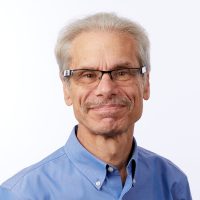David T. Felson, MD, MPH, Tuhina Neogi, MD, PhD, Awarded NIH Grant to Further the Understanding of Osteoarthritis
 David Felson
David Felson
 Tuhina Neogi
Tuhina Neogi
David T. Felson, MD, MPH and Tuhina Neogi, MD, PhD professors of medicine at Boston University Chobanian & Avedisian School of Medicine and of epidemiology at the School of Public Health, have been awarded a U19 grant from the NIH’s National Institute on Aging. The five-year, $46 million award will support their study “Novel Insights into Osteoarthritis, Pain and Function: The Multicenter Osteoarthritis (MOST) Study.”
Osteoarthritis (OA) is the most common form of arthritis, affecting approximately 600 million worldwide. It is a leading cause of disability and joint replacements, yet no effective treatments are available to date. MOST, a pioneering research initiative launched in 2001, continues to break new ground in the understanding of OA as one of the largest and longest running studies devoted to OA in the world. Since its inception, the study has provided key insights into causes and consequences of OA, as well as novel understanding of pain versus structural abnormalities in the joint and the speed of OA progression.
This award will fund the next cycle of the MOST Study to continue pursuing innovative research in OA, encompassing advanced multimodal imaging, state-of-the-art measures and comprehensive questionnaires. MOST includes a total of 4,551 participants. As it enters its fourth cycle and 20th year, additional participants from underrepresented racial and ethnic groups will be recruited, underscoring the study’s commitment to diversity and inclusivity.
According to the researchers, this newest cycle will include investigations into markers in knee joint fluid that may identify risk for pain or faster OA progression of disease identified through proteomics; the first large-scale characterization of mechanisms underlying why some people with knee OA experience excessive pain with exercise, a common remedy for OA, while others experience pain relief; and the first large-scale exploration of different crystals in the joint that can contribute to pain and joint pathology using advanced imaging. “Each one of these studies will provide opportunities for novel treatment targets,” says Felson.
The BU team will oversee the conduct of the MOST projects, as well as a pilot and feasibility grant program and future ancillary projects, ensuring a coordinated and harmonized approach to optimize and maximize scientific discovery. “With the aging of the population and rising prevalence of osteoarthritis worldwide, the study led by our investigators will continue to make important contributions to aid the lives of millions of people living with OA,” added Neogi.
View all posts